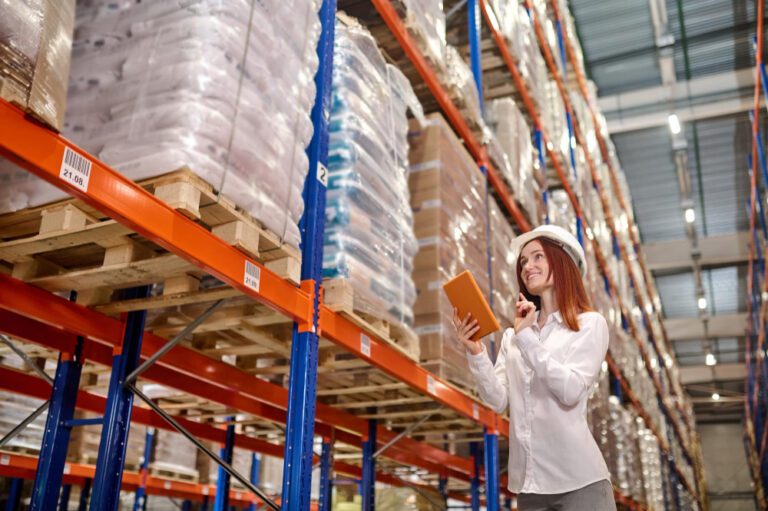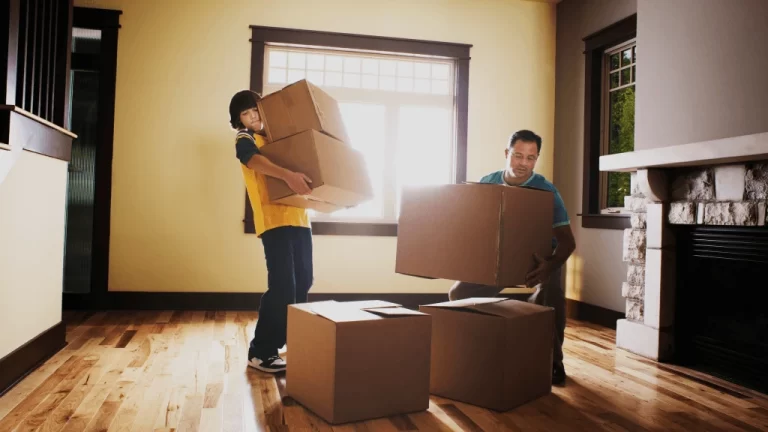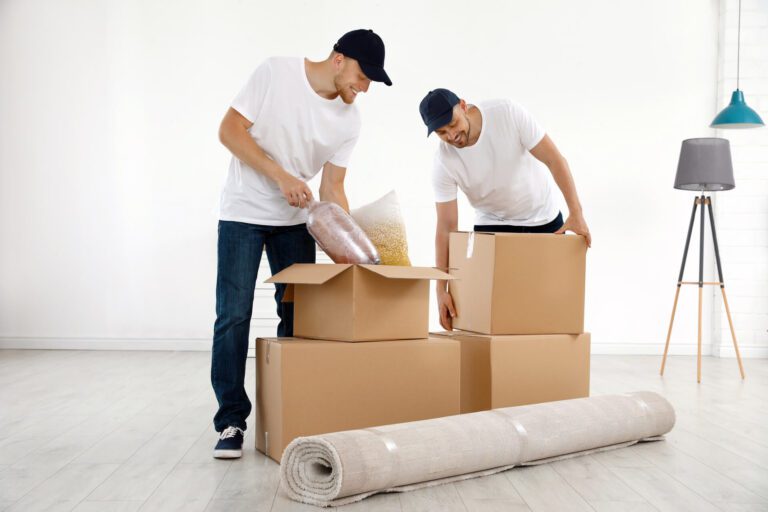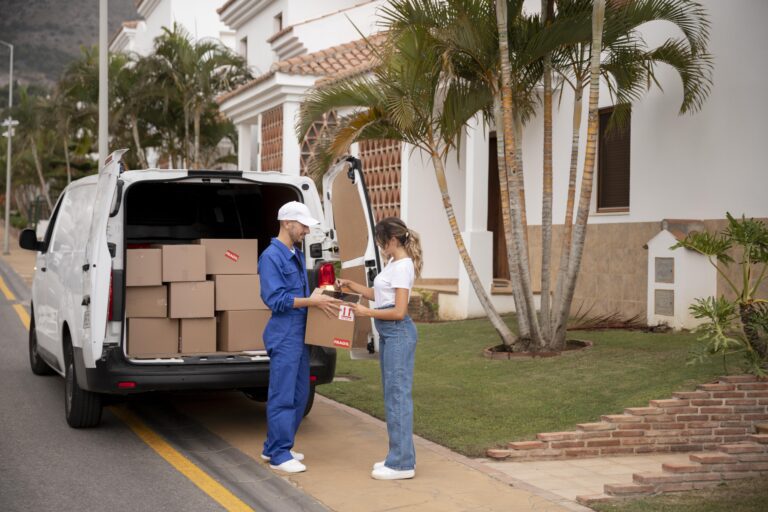Get The Ultimate Efficient Packing Tips In Memphis
Moving can be an exhilarating yet daunting task. The excitement of a new beginning is often overshadowed by the overwhelming thought of packing up an entire household. In Memphis, where the rhythm of the city beats with a unique blend of music, culture, and history, ensuring a smooth move becomes crucial.
Choose “1st Class Moving TN,” your trusted partner in making this transition seamless. With years of experience serving the Memphis community, we understand the intricacies of packing efficiently. This article aims to share our expertise, offering you efficient packing tips tailored for Memphis residents.
Whether you’re moving within the city or venturing out, these tips will ensure your belongings are safe, organized, and ready for the journey ahead. Let’s dive into the world of efficient packing with a touch of Memphis charm.
Why Efficient Packing Matters?
Efficient packing is the cornerstone of a successful move, ensuring the safety and organization of your belongings. It is the first step in transitioning to your new home, setting the tone for a smooth, moving experience.
1. Importance of Organization
Organization is the backbone of efficient packing. It allows for a systematic approach, reducing the chaos associated with moving. A well-organized packing process ensures that every item has its place, making unpacking in your new home a breeze. It also aids in quickly locating needed items, saving you time and frustration during and after the move.
Being organized also means having an inventory of your belongings. This inventory is crucial for keeping track of your items, ensuring nothing is lost during the move. It serves as a checklist, allowing you to account for each item as you unpack, providing peace of mind that everything has arrived safely.
2. Reducing Moving Costs
Efficient packing can significantly reduce moving costs. By optimizing packing space and using appropriate packing materials, you can minimize the number of boxes and reduce the volume of the moving truck needed. This optimization is especially important when moving long distances, where costs are often calculated based on the weight and volume of your belongings.
Additionally, reducing moving costs also involves being mindful of the packing materials used. Reusing boxes, utilizing laundry bags, and employing old newspapers as packing fillers are great tips to save money without compromising the safety of your items. Every penny saved makes all the difference in the overall moving budget.
3. Minimizing Damage Risks
Proper packing is crucial to protect your belongings from damage during transit. Using the right packing materials and techniques ensures the safety of fragile items and prevents unnecessary loss. Adequate cushioning and secure sealing of boxes are vital to avoid breakages and spillages.
Paying attention to the weight distribution within boxes is also essential. Heavy boxes are not only difficult to carry but also pose a risk of breaking under pressure. Balancing the weight by placing heavier items at the bottom and lighter ones on top can prevent accidents and protect your belongings.
4. Streamlining the Moving Process
A streamlined moving process is the result of meticulous planning and efficient packing. It allows for a smoother transition, reducing the stress associated with relocating. A well-thought-out packing strategy ensures that every item is accounted for, eliminating the last-minute rush and chaos.
Streamlining also involves prioritizing the packing of non-essential items and leaving essentials accessible. Having a separate box for essential items like body wash, a change of clothes, and important documents can make the first night in your new house more comfortable, ensuring a good night’s sleep and a fresh start the next day.
5. Ensuring a Stress-free Move
The ultimate goal of efficient packing is to ensure a stress-free move. A well-executed packing plan contributes to a smoother moving process, allowing you to focus on the excitement of your new beginning. It provides peace of mind, knowing that your belongings are secure and organized.
Stress-free moving also involves preparing for the unexpected. Having a contingency plan and packing a separate bag with essential items can be a lifesaver if there are delays or complications. This bag can include items like medications, snacks, water, and a change of clothes, ensuring you stay cool and collected during any unforeseen challenges.
General Moving and Packing Tips
General moving and packing tips are the little nuggets of wisdom that can transform your moving experience. They are the strategies that bring efficiency and organization to the moving process.
1. Starting Early: The Advantage of Time
Starting the packing process early is one of the most effective ways to reduce moving stress. It allows for a more relaxed pace, enabling careful packing and organization. Early starters have the luxury of sorting through their belongings, deciding what to keep, donate, or discard, which can significantly reduce the volume of items to be moved.
Starting early also provides ample time to gather packing supplies, compare moving companies, and address any issues that may arise. It allows for a more thoughtful and strategic approach to moving, ensuring that nothing is overlooked or rushed.
2. The Art of Packing Similar Items Together
Packing similar items together is a practical approach to staying organized. It simplifies the unpacking process, as items belonging to the same room or category are grouped together. This method reduces the time and effort needed to sort and arrange items in the new house.
Grouping similar items also facilitates more efficient use of box space. It allows for tighter packing, reducing the number of boxes needed. This efficiency not only saves space in the moving truck but also makes the loading and unloading process more manageable.
3. The Essential Box: What to Pack Separately
Having an essential box is a lifesaver during the first few days in the new house. This box should contain items needed immediately upon arrival, such as toiletries, a change of clothes, and basic kitchenware. Having easy access to essential items can make the initial days more comfortable, allowing you to settle in without rummaging through multiple boxes.
The essential box should also include important documents, valuables, and any items needed for assembling furniture or appliances. Keeping these items separate and easily accessible can reduce stress and ensure a smoother transition to your new home.
4. Labeling and Color-coding for Efficiency
Labeling and color-coding boxes can significantly streamline the unpacking process. Clearly marked boxes allow for quick identification of their contents and intended location, reducing the time spent searching for specific items. This organization method is especially helpful when dealing with a large number of boxes.
Color coding can also assist movers in placing boxes in the correct rooms, making the unloading process more efficient. It reduces the need for constant direction and supervision, allowing you to focus on other aspects of the move.
5. The Strategy of Loading: Big Items First
Loading big items first is a strategic approach to optimize space in the moving truck. It allows for better arrangement and stabilization of furniture and appliances, preventing movement and damage during transit. This strategy also leaves room for smaller boxes and items to be loaded last, facilitating easier access upon arrival.
Loading larger items first also enables a clearer view of the available space, allowing for more effective placement of remaining items. It’s a logical approach to ensure the safety and organization of your belongings during the move.
Read More: Find Out Why Kingsport Moving And Storage Services Are Essential
Room-by-Room Packing Guide
A room-by-room packing guide is a detailed roadmap to tackle the diverse needs of each room. It provides specific strategies to handle the unique challenges posed by different types of items.
1. Home Office
The home office is a hub of important documents, electronics, and stationery. Proper packing is crucial to prevent loss or damage to valuable items. Attention to detail and careful handling are key to ensuring the safety of office belongings.
- Protecting Electronics: Electronics are valuable and sensitive items that require special care during packing. Using original boxes, securing cords, and providing adequate cushioning can prevent damage to computers, printers, and other electronic devices. Taking photos of the setup before disassembling can also facilitate easier reassembly in the new house.
- Handling Important Documents: Important documents should be packed securely and kept close during the move. Using a dedicated box or folder for documents ensures their safety and prevents loss. Organizing documents by category and labeling them clearly can also make retrieval easier in the new house.
- Organizing Stationery: Stationery items, though small, can create clutter and can be easily lost during the move. Using zip-lock bags or small containers to group similar items can keep stationery organized and prevent loss. Labeling bags or containers with the contents can also make it easier to find specific items when needed.
- Packing Office Furniture: Office furniture should be disassembled if possible to facilitate easier moving. Screws and small parts should be kept in labeled bags attached to the corresponding furniture piece. Wrapping furniture in blankets or bubble wrap can prevent scratches and damage during transit.
- Safeguarding Sensitive Equipment: Sensitive equipment such as external hard drives and cameras should be packed with extra care. Using bubble wrap, padding, and sturdy boxes can protect sensitive items from shocks and impacts. Keeping these items in their original boxes, if available, can also provide additional protection.
2. Outdoor and Garage
The outdoor and garage areas often contain bulky and heavy items. Proper preparation and packing are essential to handle outdoor furniture, tools, and equipment effectively.
- Preparing Outdoor Furniture: Outdoor furniture should be cleaned and disassembled before packing. Removing cushions, glass tops, and other detachable parts can make furniture easier to move. Wrapping furniture in plastic or protective covers can prevent dirt and damage during transit.
- Safety Precautions for Tools: Tools should be packed securely to prevent accidents and damage. Sharp tools should be wrapped in cloth or cardboard to avoid injuries. Organizing tools in toolboxes or sturdy containers can also make them easier to transport and locate in the new house.
- Handling Garden Equipment: Garden equipment such as lawnmowers and trimmers should be emptied of fuel and cleaned before packing. Dismantling equipment with detachable parts can make them more compact and easier to move. Wrapping sharp or protruding parts in protective material can also prevent damage to other items.
- Packing Sports and Recreational Gear: Sports and recreational gear should be packed according to their size and shape. Using original boxes or suitable containers can protect gear from damage. Grouping similar items together and labeling boxes with the contents can also make unpacking and organizing easier in the new house.
- Organizing Storage Items: Storage items should be sorted and packed in labeled boxes. Discarding unwanted or expired items can reduce the volume of items to be moved. Using clear plastic bins for storage items can also allow for easier identification of contents in the new house.
3. Kitchen and Pantry
The kitchen and pantry are areas with a diverse range of items, from fragile glassware to bulky appliances. Proper packing is crucial to prevent breakages and ensure the safe transport of kitchen belongings.
- Packing Appliances: Kitchen appliances should be cleaned and packed in their original boxes if available. Detachable parts should be packed separately and labeled clearly. Wrapping appliances in bubble wrap or protective material can also prevent damage during transit.
- Handling Fragile Items: Fragile items such as glassware and china should be wrapped individually in bubble wrap or newspaper. Using dish packs or boxes with dividers can provide additional protection. Labeling boxes as “Fragile” and ensuring they are not overloaded can also prevent breakages.
- Organizing Pantry Goods: Pantry goods should be sorted and packed in sturdy boxes. Discarding expired or opened items can reduce the risk of spills and contamination. Using plastic bags or containers for loose items can prevent leakage and keep pantry goods organized.
- Preparing Kitchenware: Kitchenware such as pots and pans should be nested to save space. Wrapping handles and fragile parts in protective material can prevent damage. Using towels or clothes as padding can also provide additional protection and save on packing materials.
- Managing Perishables: Perishables should be consumed or discarded before the move. Planning meals to use up perishable food items can reduce waste. Donating unopened and non-perishable food items can also lighten the load and benefit the community.
4. Dining Room
The dining room often contains valuable and fragile items such as china and glassware. Proper packing and handling are essential to protect these items during the move.
- Packing Dining Sets: Dining sets should be disassembled and packed securely. Wrapping table legs and fragile parts in protective material can prevent damage. Screws and small parts should be kept in labeled bags attached to the corresponding furniture piece.
- Handling Decorative Items: Decorative items should be wrapped individually in bubble wrap or protective material. Using sturdy boxes and providing adequate cushioning can prevent breakages. Labeling boxes as “Fragile” and handling them with care can also ensure the safe transport of decorative items.
- Organizing Tableware: Tableware should be sorted and wrapped individually to prevent damage. Using boxes with dividers or packing paper between items can provide additional protection. Labeling boxes with the contents and intended location can also make unpacking and organizing easier in the new house.
- Preparing Dining Furniture: Dining furniture should be cleaned and disassembled if possible, before packing. Wrapping furniture in blankets or protective covers can prevent scratches and damage during transit. Labeling furniture pieces with their intended location can also facilitate a smoother unloading process.
- Safeguarding Artwork: Artwork should be packed with extra care to prevent damage. Using specialized art boxes or creating custom padding can protect artwork from impacts and scratches. Wrapping artwork in plastic or protective covers can also prevent dirt and moisture damage.
5. Living or Family Room
The living or family room is the heart of the home, filled with a variety of items from electronics to books. Proper packing is crucial to protect these items and make the moving process smoother.
- Packing Electronics: Electronics such as TVs and sound systems should be packed in their original boxes if available. Using bubble wrap or protective material can prevent damage during transit. Labeling boxes with the contents and handling them with care can also ensure the safe transport of electronics.
- Handling Wall Decorations: Wall decorations should be removed carefully and wrapped in protective material. Using specialized boxes or padding can prevent damage to frames and canvases. Labeling boxes as “Fragile” and ensuring they are not overloaded can also protect wall decorations during the move.
- Organizing Books and Magazines: Books and magazines should be packed in small, sturdy boxes to prevent overloading. Sorting books by size and using tight packing can prevent damage to covers and spines. Labeling boxes with the contents and intended location can also make unpacking and organizing easier in the new house.
- Preparing Furniture: Furniture should be cleaned and disassembled if possible before packing. Wrapping furniture in blankets or protective covers can prevent scratches and damage during transit. Labeling furniture pieces with their intended location can also facilitate a smoother unloading process.
- Managing Toys and Games: Toys and games should be sorted and packed in labeled boxes. Using plastic bags or containers for small parts can prevent loss. Wrapping fragile toys in protective material can also prevent damage during transit.
6. Bedroom
The bedroom is a personal space filled with clothes, jewelry, and personal items. Proper packing is essential to protect these items and make the moving process less stressful.
- Packing Clothes Efficiently: Clothes should be sorted and packed according to the season and type. Using wardrobe boxes or hanging clothes in plastic bags can prevent wrinkles. Rolling clothes and using vacuum-sealed bags can also save space and protect clothes from dirt and moisture.
- Handling Jewelry and Valuables: Jewelry and valuables should be packed securely and kept close during the move. Using jewelry boxes or padded containers can prevent damage and tangling. Labeling boxes clearly and keeping them in a safe place can also ensure the security of valuable items.
- Organizing Personal Items: Personal items such as toiletries and makeup should be packed in waterproof bags or containers. Using plastic bags for liquids can prevent spills and leakage. Sorting personal items by category and labeling bags or containers can also make retrieval easier in the new house.
- Preparing Bedroom Furniture: Bedroom furniture should be disassembled and packed securely. Wrapping furniture in blankets or protective covers can prevent scratches and damage during transit. Labeling furniture pieces with their intended location can also facilitate a smoother unloading process.
- Managing Shoes and Accessories: Shoes and accessories should be sorted and packed in labeled boxes or bags. Using shoe boxes or packing paper can prevent damage and deformation. Grouping similar accessories together and using small containers or bags can also keep them organized and prevent loss.
7. Bathroom
The bathroom contains a variety of items, from toiletries to cleaning supplies. Proper packing is crucial to prevent spills and ensure the safe transport of bathroom belongings.
- Organizing Toiletries: Toiletries should be sorted and packed in waterproof bags or containers. Using plastic bags for liquids can prevent spills and leakage. Labeling bags or containers with the contents can also make retrieval easier in the new house.
- Handling Medications: Medications should be packed securely and kept accessible during the move. Using a dedicated box or bag for medications ensures their safety and prevents loss. Organizing medications by type and labeling them clearly can also make retrieval easier in the new house.
- Packing Bathroom Appliances: Bathroom appliances such as hair dryers and curling irons should be packed in their original boxes if available. Wrapping appliances in protective material can prevent damage during transit. Labeling boxes with the contents and handling them with care can also ensure the safe transport of bathroom appliances.
- Preparing Bathroom Furniture: Bathroom furniture should be cleaned and disassembled, if possible, before packing. Wrapping furniture in protective covers can prevent scratches and damage during transit. Labeling furniture pieces with their intended location can also facilitate a smoother unloading process.
- Managing Cleaning Supplies: Cleaning supplies should be packed in waterproof bags or containers to prevent spills and leakage. Using plastic bags for liquids and labeling them clearly can prevent contamination of other items. Discarding opened or nearly empty containers can also reduce the volume of items to be moved.
Read More: Find The Best Germantown Long-Distance Moving Services
Why Choose 1st Class Moving TN for Elevating Your Moving Experience?
1st Class Moving TN is not just a moving company; we are your partners in ensuring a smooth, stress-free moving experience. Our commitment to excellence, customer satisfaction, and personalized service sets us apart in the moving industry.
- Residential Moving: Whether you’re relocating within the city or moving across state lines, we’re here to make your residential move stress-free, handling your belongings with utmost care and professionalism.
- Commercial Moving: We understand the unique challenges of commercial moving and are equipped to handle them efficiently, ensuring minimal downtime for your business.
- Interstate and Long-Distance Moving: No distance is too far for us. We’re prepared to help you relocate wherever your destination may be, making your move smooth and hassle-free.
- Packing and Unpacking Services: Our professional team can handle the tedious task of packing and unpacking, ensuring your items are safe and secure, allowing you to focus on other aspects of your move.
- Storage Services: We offer secure storage solutions for those times when you need a little extra space, providing a safe haven for your belongings.
- Office Moving: Moving your office doesn’t have to be stressful. Let us handle the details so you can focus on your business.
- Customer-Centric Approach: We prioritize the needs of our customers above all else, providing personalized and considerate moving solutions.
- Excellence & Professionalism: Our team is trained and equipped to handle all moving tasks with the utmost professionalism, committing to providing top-quality service through every step of the moving process.
- Reliability & Transparency: We believe in maintaining an open line of communication with our clients, providing clear and accurate estimates, and delivering on our promises.
- Innovation & Adaptability: We continuously strive to improve and innovate our services, ensuring that we meet the ever-changing needs of our customers and stay ahead in the moving industry.
Conclusion
In conclusion, efficient packing is the cornerstone of a successful move, ensuring the safety and organization of your belongings. It sets the tone for a smooth-moving experience, reducing the associated stress and chaos.
1st Class Moving TN is here to assist you in every step of this journey, providing top-notch services tailored to your specific needs. We invite you to experience the difference with us, ensuring your move is a first-class experience.
Ready to make your next move a stress-free experience with 1st Class Moving TN? Don’t hesitate to get in touch with us to discuss your plans or any queries you might have. Let’s start planning your move together today!
FAQs
We recommend using bubble wrap, newspapers, or soft linens to wrap fragile items individually. Sturdy boxes and proper cushioning are essential to prevent any damage during the move.
Starting the packing process as early as possible is advisable. Beginning at least a few weeks in advance allows for a more organized, systematic, and less stressful packing experience.
Absolutely! We offer professional packing and unpacking services to make your move as smooth as possible. Our team ensures that your items are packed securely and unpacked carefully.
Yes, we provide secure storage solutions for those times when you need extra space, ensuring the safety of your belongings.
You can contact us at 901-235-1443 or visit us at 512 Southgate Ave, Nashville, TN 37203. Our team of moving professionals is ready and waiting to turn your moving stresses into a first-class experience.





